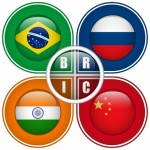Columnist Doug Sacks looks beyond the days of BRIC.
Mardi Gras is behind us and so the Lenten season is under way. And it is not just drunken college girls in New Orleans who are showing off their assets.
Access to mobile phones and mobile phone technologies among the poorest populations are transforming how business is done, allowing vast marginal populations a chance to acquire wealth and opening up new opportunities for global business visionaries and international marketing.
Remember when BRIC was all the rage? Every marketing expert was touting these four powerhouses – Brazil, Russia, India, and China. This was the future; the pot of gold at the end of the overseas rainbow where millions, even billions of new customers were itching to get their paws on the developed world’s products and services. Where are we today?
- Brazil is fast heading down the disastrous road to economic oblivion and is looking more and more like Venezuela every day. Russian corruption and lack of
 economic cohesion has been made much worse by increased Western economic sanctions.
economic cohesion has been made much worse by increased Western economic sanctions.
- The Russian economy was seriously ill before the sanctions, with only the continued infusion of the lifeblood of high oil prices keeping it off life support. Now, with oil at $50 a barrel, what will happen?
- India remains India even with the election of a pro-business Prime Minister. India, as always, is a model of controlled chaos yet it is a functioning democracy with enormous potential. But its legacy of red-tape, restrictions, tariffs and inefficient business practices makes it difficult for international marketers to thrive.
- China, with its economic engine fuelled by supplying low cost merchandise to the world sputtering, has seen its economy contract as its factories churning out this stuff have been silenced as the worlds’ markets have contracted. Economic woes just add strain to its broken political system. With its authoritarian regime wobbling on the ancient legs of its leaders, China is poised for dramatic change. Eventually, this will lead to vast opportunity. But when?
So, even without a quantum shift in communication technologies, it was time to look further afield for other markets. In the days of BRIC, it was still the traditional global marketing model used where ‘prospects’ had to be upwardly mobile, middle-class with bank accounts, credit cards, credit worthiness and, of course, disposable income. Socio-economic level (SEL) was king. So that limited the reservoir of new customers. The game-changer now is the rapid adoption of mobile phones, not only among the upwardly mobile, but especially among the ‘have-nots’. With pre-paid plans, many impoverished people who once fell below the radar of the direct marketers are now accessible, communicating and becoming entrepreneurial which in itself, will raise their incomes. So savvy marketers that understand how phones are being used can tap into heretofore untappable markets. The limits will be set only by their amount of imagination and creativity.
International marketing and empowering the impoverished
In Africa, once ignored by marketers and with good reason, start-ups like M-pesa which allow money transfers, bill payments and consumer purchases, even school tuition payments, has blossomed into a $21 billion industry. More importantly, its model of empowering the impoverished has inspired 200 start-ups around the world. Kopo-Kopo founded by Americans, allows small retailers-the lifeblood of most emerging economies-to accept digital payments. M-Kopa is allowing poor rural villagers to switch from kerosene lamps to electric lights by making regular payments of a few pennies a day and even save money in the bargain. Money that can now be spent on other things. Can’t this model be adapted for other goods and services? 65% of households in sub-Saharan Africa had at least one mobile phone in 2013, so this extends well beyond the traditional middle-class target group. Easypaisa in Pakistan moves $3.5 billion in payment transfers and transactions annually. bKash in Bangladesh moves $4 billion after being in business only 2 years. India, as usual, is proceeding more slowly but the growth potential is exponentially greater. Mobile transactions over the next year could skyrocket to $350 billion. Moneyon Mobile in India predicts that within 3-5 years 30% of India’s payment transactions will be online.
So what does all this mean? And how does one not in the mobile app business benefit?
Improved communications lead to less isolation, more savings and countless small entrepreneurial business opportunities. This allows wealth to develop among even impoverished populations. Even savings of pennies a day spread over massive consumer bases can create vast amounts of wealth overall. Company visionaries that can see these opportunities in underdeveloped world regions and create a service or product may harvest huge rewards. Those businesses needing more traditional marketing methods can also take advantage of large population groups that now are accumulating disposable income.
Global databases are appearing now that reach well beyond the usual suspects of upper middle-class credit card holders who speak fluent English. Mobile phone numbers and email addresses are being captured so the contact channels are expanding. The ever-important forums and idea-exchanges for global marketers disappeared for a while which was a loss for everyone. But it is making a comeback now, largely through the presence of a few international conferences centering on the new technologies like the recent TFM&A Conference in London and the expanded presence of organisations like this one, the Global Marketing Alliance.







Leave your thoughts